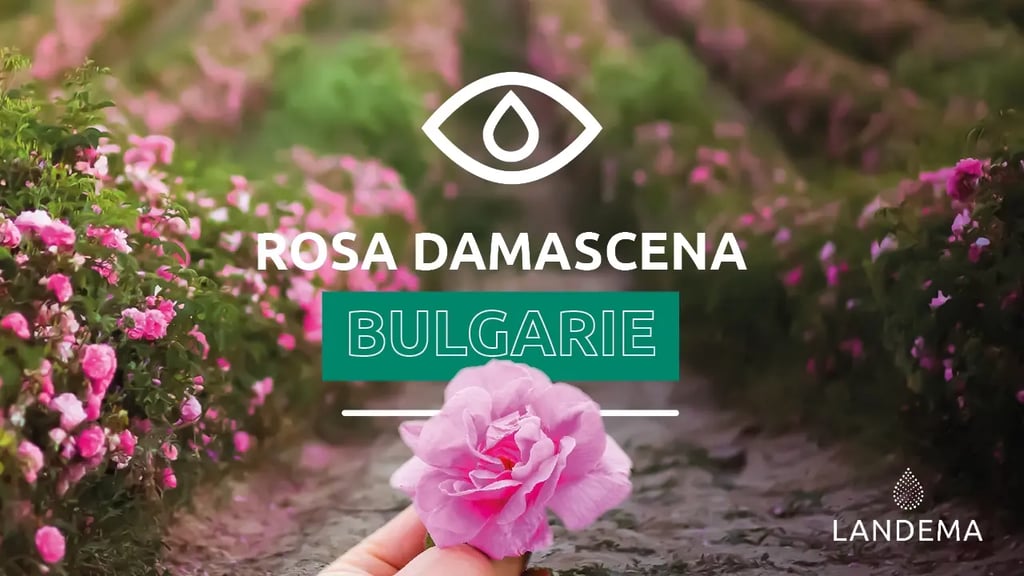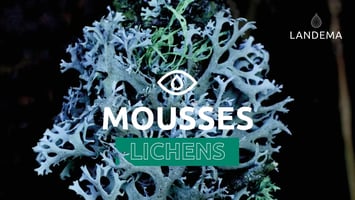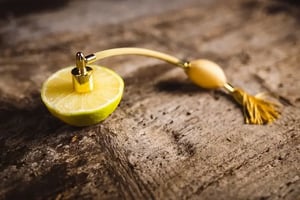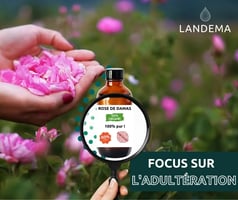Bulgarian rose: characteristics and extraction

July 25, 2023
Journey to the land of the Bulgarian Rose
Bulgaria, home of rose essence for over three hundred years, supplies the world's perfume industry from Geneva to Grasse to New York. After the invention of rose distillation in Kazanlak in the 18th century, Bulgarian essence enjoyed a golden age just before the First World War.
The ups and downs of history then led to a decline in production, to the point where it almost lost its reputation in the 1980s. In the mid-1990s, however, the trend was reversed and we witnessed a veritable renaissance: new plantations were established and new distilleries set up, producing quality products.
Today, Bulgaria is back at the forefront of the world of perfumery roses.
Landema - Biolandes group
Biolandes, Landema's parent company, played an early part in this revival, with the creation of Biolandes Bulgaria in 1996, the planting of a hundred hectares of roses and the renovation of an old factory.
This article pays tribute to the Bulgarians who contributed to the success of this project. It invites you to discover the authentic story of a rose campaign in Bulgaria today. An encounter with a strong alchemy between a flower, a region, a know-how and the work of thousands of people committed to bringing to life the unique fragrance of rose essence, the emblem of perfumery.
Bulgarian rose: roses in the valley
Landema - Biolandes group
Around Kazanlak, at the foot of the Balkan Mountains, the Valley of the Roses stretches for 80km.
Fields of Damask Roses (Rosa damascena) have been cultivated here for over 300 years.
June in the fields with the Bulgarian Rose
From late May to mid-June, every morning, fifteen thousand pickers work in the fields from daybreak.
With their fingertips, they pick every flower that blooms before noon.
Bulgarian rose: the rose of thirty petals
Native to Persia, Rosa damascena, the rose with thirty petals, is the richest in aromatic molecules. Ideally, it should be picked just as it blooms, when dew still protects its fragrance from evaporation.
Three hours for a bag of Bulgarian flowers
At the end of the row of roses, a picker can be seen gathering the last flowers before closing the first bag, after three hours' work.
In this twenty-hectare field near Shipka, at the height of the campaign, three hundred pickers are needed every morning to ensure that no flowers are left behind.
Five thousand flowers
You can count five thousand flowers in one bag, and for experienced pickers, three bags in a morning. These are gestures to be repeated over the twenty-five days of the campaign.
White rose
Landema - Biolandes group
In this field, you can also see a few rows of Rose alba, a white Damascena with a very intense fragrance, but now abandoned because it produces half as much essence as Rosa damascena.
The ballet of the carts
Landema - Biolandes group
Carts and horses, red lucky charms on their foreheads. These carriages criss-cross the fields to bring the sacks to the weighing station.
Weighing, the heart of field life
Under stakes and a canvas tarpaulin, you can see scales and a fire on cold mornings. This is the meeting point for pickers, transporters, field and distillery managers.
Counting time
The average bag weighs 15 kilos. For each bag, a nominal ticket and payment are given twice a week.
Captive gasoline
Ready to be transported to the distillery, the bags are sealed so as not to lose any of the treasure they contain: 4 to 5 grams of gasoline.
Landema - Biolandes group
Arrival at the plant
Nine o'clock. The first bags arrive at Landema's Zimnitsa plant.
They are then divided between stills for the gasoline and extractors for the concrete.
To find out more about the different types of extraction, click here.
Pink gold
Thirty bags of flowers to fill each machine. In just a few minutes, the whole factory smells of roses.
Over fifty tons of flowers are processed every day.
Copper and stainless steel
Landema - Biolandes group
Most of the stills in the plant are made of copper, while the extractors are made of stainless steel. For three weeks, we distill day and night.
For more stories, tips and information on essential oils, join us on instagram, facebook or linkedin.
From flower to essence
Two hours in the steam of the alembic to separate the essence from the Rosa damascena flowers. This is the first stage in the distillation process, which is completed in the secrecy of the florentine's room.
Landema - Biolandes group
Six million flowers in one bottle
Every day in the copper florentin, the extraction of the essence is a veritable ceremony. 5 to 6 million roses make up the perfume in this glass vase!
Flowers of pride
From the origins of the essence to its apogee, from decadence to renaissance, the Kazanlak Rose is part of Bulgaria's heritage. And every year, its fragrance in the fields returns to embody the pride of a very long tradition and the desire to perpetuate its history.
Bulgarian Rose in perfumery
Landema - Biolandes group
The flowers
Rose damascena is used almost exclusively in perfumery.
There is also a marginal production of Rose centifolia absolute, grown in Grasse and Morocco.
The countries
Two major producing countries: Turkey and Bulgaria.
Other producers: Morocco (absolute), Iran (rosewater), India, China and the Arabian Peninsula.
Landema, Biolandes Group
Biolandes occupies a unique position with 3 cultivation, distillation and extraction sites: in Turkey (Isparta), Bulgaria (Zimnitsa) and Morocco (El Kelaa M'Gouna). The company's expertise in roses has made it a major supplier to the global perfume industry.
Landema's mission is to make the exceptional products of the Biolandes Group accessible to all, and to make them available on our online boutique.



